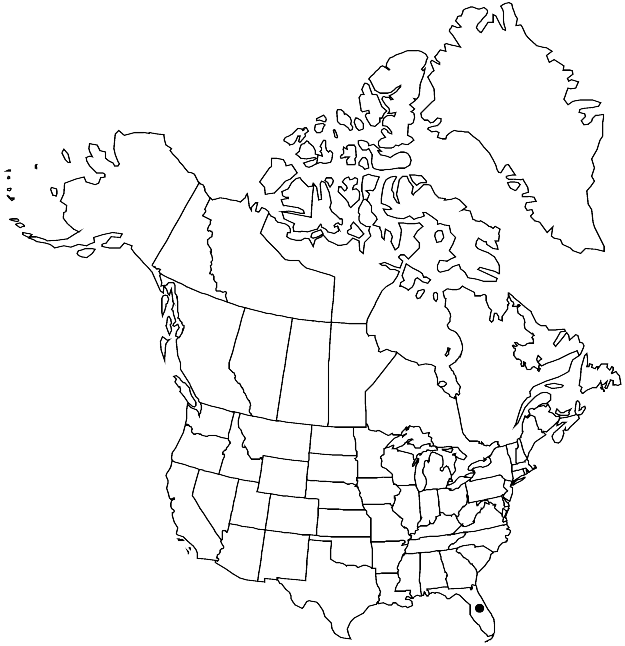Difference between revisions of "Groutiella tomentosa"
Taxon 9: 51. 1960.
FNA>Volume Importer |
imported>Volume Importer |
||
| (6 intermediate revisions by 2 users not shown) | |||
| Line 7: | Line 7: | ||
|year=1960 | |year=1960 | ||
}} | }} | ||
| − | |basionyms={{Treatment/ID/ | + | |basionyms={{Treatment/ID/Basionym |
|name=Macromitrium tomentosum | |name=Macromitrium tomentosum | ||
|authority=Hornschuch | |authority=Hornschuch | ||
| + | |rank=species | ||
| + | |publication_title=in C. F. P. von Martius et al., Fl. Bras. | ||
| + | |publication_place=1(2): 21. 1840 | ||
}} | }} | ||
|synonyms= | |synonyms= | ||
| Line 25: | Line 28: | ||
|elevation=low elevations | |elevation=low elevations | ||
|distribution=Fla.;Mexico (San Luis Potosí;Tamaulipas);West Indies;Central America;South America;Asia. | |distribution=Fla.;Mexico (San Luis Potosí;Tamaulipas);West Indies;Central America;South America;Asia. | ||
| − | |discussion=<p>Groutiella tomentosa has leaves narrowed to a rigid, long, often fragile subula.</p> | + | |discussion=<p><i>Groutiella tomentosa</i> has leaves narrowed to a rigid, long, often fragile subula.</p> |
|tables= | |tables= | ||
|references= | |references= | ||
| Line 34: | Line 37: | ||
-->{{#Taxon: | -->{{#Taxon: | ||
name=Groutiella tomentosa | name=Groutiella tomentosa | ||
| − | |||
|authority=(Hornschuch) Wijk & Margadant | |authority=(Hornschuch) Wijk & Margadant | ||
|rank=species | |rank=species | ||
| Line 48: | Line 50: | ||
|publication year=1960 | |publication year=1960 | ||
|special status= | |special status= | ||
| − | |source xml=https:// | + | |source xml=https://bitbucket.org/aafc-mbb/fna-data-curation/src/2e0870ddd59836b60bcf96646a41e87ea5a5943a/coarse_grained_fna_xml/V28/V28_49.xml |
|genus=Groutiella | |genus=Groutiella | ||
|species=Groutiella tomentosa | |species=Groutiella tomentosa | ||
Latest revision as of 21:36, 5 November 2020
Plants green. Branch leaves with distal leaves erect-spreading to spreading and widest distally, lanceolate-oblong to ovate-lanceolate, 1.5–3 mm; margins denticulate proximally as projecting cell ends, entire distally; apex acute, ending in long, linear, fragile subula; costa prominent, vanishing in subula, or often ending near apex in proximal leaves; distal laminal cells irregularly rounded to elliptic-hexagonal, 3–6 µm. Sexual condition dioicous, male plants similar to female; perigonia terminal. Seta 5–11 mm. Capsule oblong- to short-cylindric, 2.2–3.5 mm. Spores isosporous, 22–32 µm.
Habitat: Trees, rock in subtropical forests
Elevation: low elevations
Distribution

Fla., Mexico (San Luis Potosí, Tamaulipas), West Indies, Central America, South America, Asia.
Discussion
Groutiella tomentosa has leaves narrowed to a rigid, long, often fragile subula.
Selected References
None.